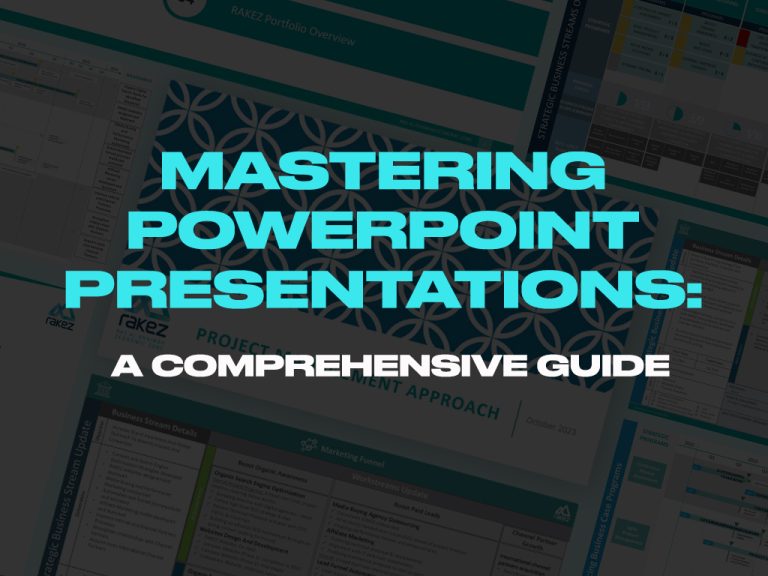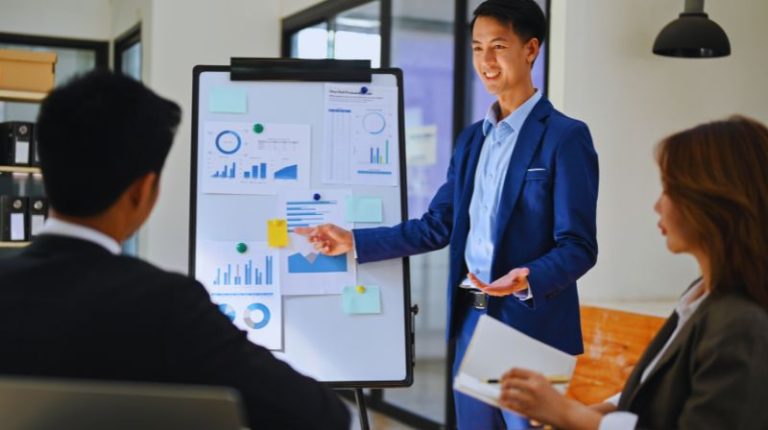When it comes to delivering a presentation, one of the biggest challenges I’ve faced is knowing how many times I should practice. Too little practice, and I risk stumbling through my words or forgetting key points. But, practicing too much can make me sound robotic and overly rehearsed, which isn’t ideal either.
After researching and refining my presentation skills, I’ve discovered a sweet spot. By focusing on quality over quantity and breaking my practice sessions into manageable chunks, I’ve been able to boost my confidence without burning out.
If you’re curious about finding the right balance for your presentations, keep reading below I’ve got plenty of tips to help you perfect your delivery!
Understanding the Impact of Practice on Presentation Success
When it comes to presentations, the number of times you practice can greatly affect your performance. Many people wonder, “How many times should you practice your presentation?” The answer lies in finding the right balance. Practicing too little leaves you underprepared, while over-practicing might dull your enthusiasm. In my experience, the key is strategic practice that builds confidence and enhances your speaking skills. By dedicating time to rehearse your presentation and focusing on quality practice sessions, you can improve your delivery, strengthen your presentation skills, and feel more at ease in front of an audience. The right amount of practice doesn’t just help you memorize, it helps you communicate your message effectively and leaves a lasting impact on your audience.

The Science Behind Practice and Performance
Repetitive practice has a significant impact on our cognitive and psychological processes. When I practice a presentation multiple times, my brain starts to internalize the content, which reduces cognitive load during the actual presentation. This means I’m not just memorizing words but gaining a deeper understanding of the material, which allows for more natural delivery. Repetition helps build muscle memory for gestures and body language, ensuring that my delivery feels smooth and confident.
Moreover, consistent practice also reduces performance anxiety by familiarizing myself with the flow of the presentation. The more I practice, the more comfortable I feel in front of an audience, boosting my confidence and improving the overall experience for my listeners. In short, practicing your presentation multiple times is crucial for both mental preparedness and polished performance.
How Many Times Should You Repeat a Presentation?
One of the most common questions I’ve asked myself is, “How many times should you practice your presentation?” Repeating a presentation helps solidify key points and improve your confidence, but there’s no single “magic number” that works for everyone. Generally, experts recommend practicing at least three to five times, depending on the complexity of your material and your comfort level with public speaking. By repeating your presentation enough to feel fluent but not over-rehearsed, you can achieve the perfect balance that ensures a natural delivery and genuine connection with your audience.
Quality Over Quantity: Finding the Balance
Striking the right balance between practicing too little and too much is crucial for any successful presentation. In my experience, practicing too little leaves me feeling unprepared, with a lack of confidence in my presentation skills. On the other hand, over-practicing often leads to a robotic delivery, where I start to sound more like I’m reciting a script than actually engaging with the audience. The goal is to focus on quality practice sessions that hone your skills without draining your energy. Rather than aimlessly repeating your speech, it’s better to rehearse key sections, refine your delivery, and practice speaking in front of others for valuable feedback. This way, you’ll avoid burnout and be able to deliver your presentation with enthusiasm, keeping your audience captivated from start to finish.
Finding the balance means paying attention to your body language and emotional energy as you practice. If you notice that you’re losing your enthusiasm or sounding too mechanical, it’s a sign that you’ve practiced enough. By focusing on intentional practice and giving yourself breaks, you can ensure that each time you rehearse, you’re getting closer to a polished, confident, and impactful presentation.
Optimal Practice Duration for a 10-Minute Presentation
When preparing for a 10-minute presentation, it’s essential to allocate the right amount of practice time without overdoing it. A common mistake is underestimating how much time you need to rehearse effectively. On average, for a 10-minute speech, you should aim to practice for at least 1-2 hours, spread over several days. This gives you enough time to refine your delivery, work on body language, and ensure that you’re comfortable with the flow of your presentation. Breaking it into manageable practice sessions allows you to improve without feeling overwhelmed, ensuring that you’re fully prepared by the time you’re in front of an audience.

Time Management Tips for Effective Practice
Maximizing the productivity of your practice sessions is key to delivering a great presentation. To get the most out of your rehearsal time, start by breaking your practice into focused, shorter sessions. For example, instead of trying to practice the entire presentation in one go, work on one section at a time. Set a timer for 10-15 minutes to rehearse a specific part of your speech, then take a break before moving on. This keeps your mind fresh and helps you focus on improving smaller elements like intonation and gestures.
Another useful tip is to practice in front of a mirror or record yourself. This way, you can observe your body language and spot areas where you might need improvement. Reviewing recordings of your practice sessions helps you refine your presentation skills, identify weak points, and make adjustments before the big day. Additionally, try practicing in front of a friend or colleague who can give you honest feedback. Sometimes, an outside perspective can highlight areas you may not have noticed.
Lastly, be sure to incorporate breaks between your practice sessions. Overloading yourself with too much practice at once can lead to mental fatigue, which diminishes the quality of your presentation. Instead, use a structured approach, practice in shorter bursts, and allow time to absorb what you’ve rehearsed. This strategy will not only keep you fresh but will also boost your confidence when it’s time to deliver your speech in front of an audience.
The Risk of Over-Practicing: Is There Such a Thing?
While it’s true that practice makes perfect, there’s also a limit to how much practice is beneficial. Over-practicing a presentation can be just as harmful as practicing too little. When you rehearse too many times, your delivery may start to feel stale, mechanical, and lacking the natural energy that engages an audience. The key is to recognize when you’ve reached that magic number of practices where you feel comfortable and confident, but not so rehearsed that you lose the personal connection with your listeners. Finding that balance between enough practice and overdoing ensures you maintain authenticity and enthusiasm in your presentation.
Signs You Might Be Overdoing It
Over-practicing can manifest in several ways, and it’s important to recognize the signs early to avoid burning out. Here are some symptoms of over-practicing and how you can mitigate them:
- Monotonous Delivery: If your presentation starts to sound robotic or flat, it’s a sign you’ve rehearsed too much. To fix this, try varying your tone and practicing in front of a live audience to keep your energy levels up.
- Mental Fatigue: Feeling mentally drained before you’ve even stepped on stage? Over-practicing can lead to burnout. To prevent this, take regular breaks during your practice sessions and avoid rehearsing the entire presentation in one sitting. Focus on smaller sections instead.
- Loss of Enthusiasm: If you start to dread going through your presentation, you might be overdoing it. Keep your practice sessions short and effective by setting a time limit, such as 20-minute bursts followed by breaks, to keep your energy high.
- Forgetting Key Points: Ironically, practicing too much can sometimes cause you to forget important details or stumble over parts you previously knew well. This happens when your mind becomes too cluttered. To counteract this, try to rehearse with intention, focusing on key points rather than memorizing every word.
- Over-Analyzing Your Performance: Constantly nitpicking your presentation can lead to stress and self-doubt. It’s important to remember that no presentation will be 100% perfect. Instead of obsessing over minor details, aim for a confident delivery that feels natural and engaging.
By recognizing these signs, you can adjust your practice routine to ensure that you’re adequately prepared without going overboard. Remember, it’s not just about the number of times you practice, but the quality of each session that truly counts.
Leveraging the Rule of 3 in Presentations
One of the most effective tools I’ve found in delivering memorable and impactful presentations is the Rule of 3. This principle is based on the idea that people can more easily remember information presented in groups of three. Whether you’re outlining key points, presenting solutions, or emphasizing ideas, breaking your presentation into three clear sections makes it easier for the audience to absorb and recall your message. The Rule of 3 works not just because of its simplicity, but because it reflects how our brains naturally process information. By structuring your presentation around this technique, you can enhance both your presentation skills and audience engagement.

Case Studies: Success Stories Using the Rule of 3
A great example of the Rule of 3 in action comes from Steve Jobs, who famously used this method in his presentations. When introducing the iPhone in 2007, he broke the product’s key features into three categories: “a widescreen iPod, a revolutionary phone, and a breakthrough internet communicator.” This concise, three-part structure helped the audience quickly grasp the significance of the product, and it’s still remembered today.
Another notable use of the Rule of 3 is in TED Talks, where many speakers divide their presentations into three main points to keep their messages clear and focused. For example, Simon Sinek’s famous talk, “Start with Why,” is organized into three simple concepts: why, how, and what. This approach makes his message not only easy to follow but also incredibly powerful and persuasive.
In my own experience, applying the Rule of 3 has helped me simplify complex ideas and deliver them more confidently. For instance, when I was preparing a presentation on marketing strategies, I focused on just three key tactics: content creation, social media engagement, and data analytics. This allowed me to cover the topic comprehensively while keeping the audience engaged and able to retain the most important points.
Using the Rule of 3 not only improves the clarity of your presentation but also boosts audience recall, making your delivery more effective and memorable. It’s a simple yet powerful technique that can take your presentation skills to the next level.
FAQs
How many times should you repeat a presentation?
Practicing your presentation at least 3 to 5 times ensures you’re well-prepared without sounding robotic. Focus on quality over quantity to maintain a natural and engaging delivery.
How long should you practice for a 10-minute presentation?
For a 10-minute presentation, aim to practice for about 1-2 hours spread across several days. This helps refine your presentation skills while ensuring you don’t experience mental fatigue.
Is it possible to over-practice a presentation?
Yes, over-practicing can make your presentation sound overly rehearsed and stiff. Avoid burnout by practicing in short, focused sessions and maintaining enthusiasm throughout your delivery.
What is the rule of 3 in a presentation?
The Rule of 3 involves breaking your presentation into three main points, making it easier for the audience to follow and remember your message, enhancing overall engagement and recall.
How many times should you practice your presentation before delivering it?
Ideally, you should practice your presentation at least ten times to ensure you are confident and familiar with the content.
What is the recommended number of times you should rehearse your speech?
It is recommended to rehearse your speech at least 3 or 4 times to improve your delivery and body language.
How can a coach help you determine how many times you should practice your presentation?
A coach can assess your current skills and provide personalized feedback, helping you estimate the number of practice sessions you need based on your experience and the complexity of your presentation.
Why is it important to practice your speech out loud?
Practicing your speech out loud helps you become comfortable with the material, improves your communication skills, and allows you to identify any areas that need improvement.
How can practicing your presentation multiple times boost your confidence?
The more you practice your presentation, the more familiar you become with the content and flow, which helps alleviate anxiety and boosts your confidence when delivering the presentation.
Is it necessary to practice every slide of your PowerPoint presentation?
Yes, it is essential to practice every slide of your PowerPoint presentation to ensure smooth transitions and to effectively convey your message to the audience.
What should you do if you don’t want to practice your presentation more than once or twice?
If you don’t want to practice more than once or twice, you might risk poor delivery. It is advisable to commit to at least ten times to ensure you feel prepared and confident.
How long should you estimate your practice sessions to be for a 60-minute presentation?
For a 60-minute presentation, you should estimate at least several hours of practice to thoroughly rehearse your content and refine your delivery.
What are some good tips to prepare and improve your presentation skills?
To prepare, know your content thoroughly, practice in front of a mirror or with a friend, and focus on your body language. Additionally, consider using a clicker for your slides to enhance your delivery.
Conclusion
Finding the right balance between too little and too much practice is crucial for delivering a compelling presentation. Repeating your presentation several times ensures confidence, while avoiding over-practice keeps your delivery natural. By incorporating techniques like the Rule of 3, you can simplify complex ideas and connect more effectively with your audience.
Remember, quality practice sessions and mindful preparation are key to mastering your presentation skills. Take the time to rehearse strategically, and you’ll leave a lasting impact, ensuring your message is delivered with clarity and confidence.






